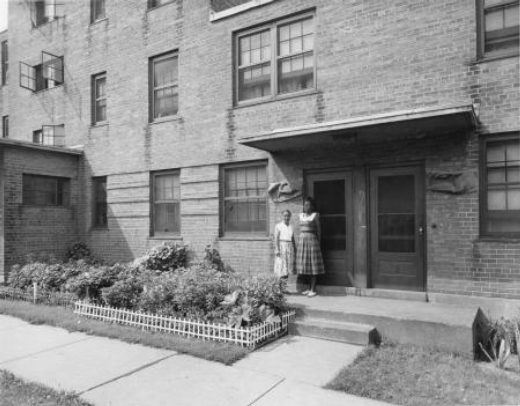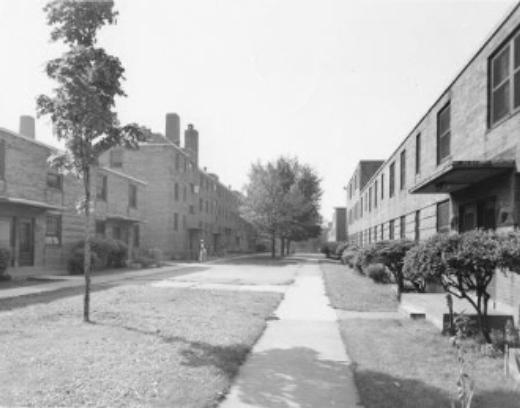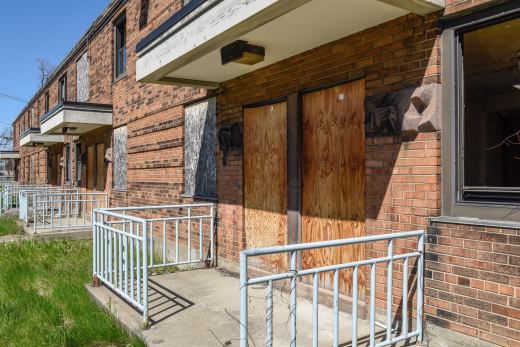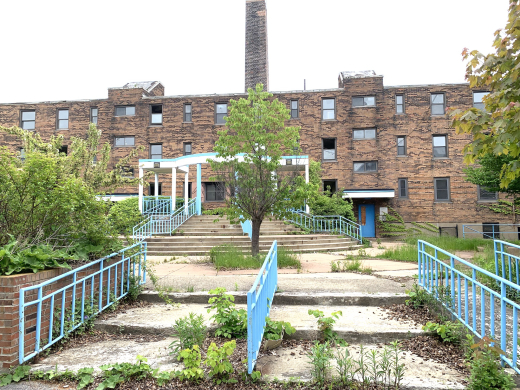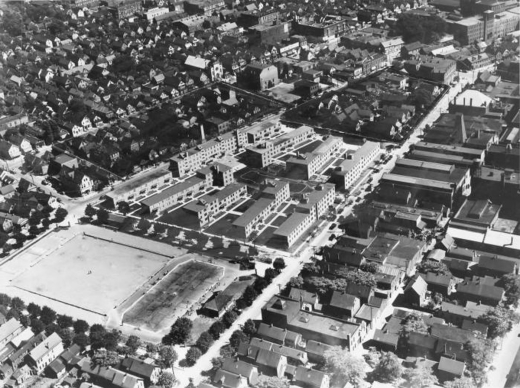Willert Park Courts, the first housing complex for African Americans in Buffalo and an early example of International Style design, will receive the °®¶¹app 2020 Modernism in America Advocacy Award of Excellence. The organization's top advocacy prize honors the work of Preservation Buffalo Niagara (PBN) and the Michigan Street Preservation Corporation (MSPC) who for over 15 years maintained their stance that the complex is “one of the single most historic places in the City of Buffalo.” The organizations have dedicated countless hours and resources to the preservation battle for this culturally, socially and architecturally significant resource. The award will be presented during a virtual ceremony on Thursday November 12, 2020, along with all of the 2020 Modernism in America Award winners.
Buffalo's Willert Park Courts to receive Modernism in America Advocacy Award
Affiliation
°®¶¹app staff
Tags
Willert Park Courts was determined eligible for listing the National Register of Historic Places by the New York State Historic Preservation Office for its significance in the categories of architecture, art, community planning and development, ethnic heritage and landscape architecture. The site is a testament to both government-sanctioned racism and segregation as well as an early triumph in the long fight against these policies. The Buffalo Urban League fought for years to allow Black residents in Buffalo Municipal Housing Authority (BMHA) properties, but . BMHA eventually agreed to construct the racially segregated Willert Park Courts, albeit with many fewer units than had been built for whites. The project manager of the development was A.D. Price, the only Black senior district manager in the BMHA. Price oversaw the neighborhood from its initial construction to his death in 1968 and Willert Park was renamed in his honor.
Designed by local architect Frederick C. Backus and completed in 1939, the project was one of the first built under the U.S. Housing Authority, created by Franklin D. Roosevelt as part of the New Deal. More units were added in 1942 and 1944. As described by the local New York Tri-State chapter of °®¶¹app, “the complex’s design and layout was novel for the period: spare, low-rise brick structures arranged around a central courtyard and cushioned with ample green space.” Adding to the design are a series or ornamental bas-relief concrete panels on the theme of working-class life set at the entrances of each building, which were funded through the Federal Arts Program and created by artists Robert Cronbach and Harold Ambellan. Willert Park Courts was among eight Buffalo buildings included in MoMA’s 1940 Guide to Modern Architecture of the Northeast States.
Portions of the site were demolished in 2006 and 2009 to make way for new housing units, and all remaining units were vacated. Preservation Buffalo Niagara and Michigan Street Preservation Corporation are fighting to save the remaining section, which contains ten of the original 1939 buildings. The redevelopment is a joint project of BMHA, Bridges Development, Inc. and Norstar Development. BMHA continues to the neglect the property and block the National Register nomination. BMHA asserts that housing needs for the area require larger, multi-bedroom units. However, there are other ways to achieve this goal besides demolishing a highly significant piece of history. According to Preservation Buffalo Niagara, “Within a one mile radius of Willert Park are over 2,500 vacant lots, totaling nearly 300 acres of vacant land. Additionally, BMHA has current site control of Perry Projects and its nearly 1,000 vacant units.”
At every turn, PBN and MSPC have taken the necessary steps to save Willert Park Courts. They have participated in the Section 106 process, written letters, held press conferences and received input from the community. They have raised the profile of the site and in 2019 it was listed as one of the “11 Most Endangered Historic Places” in the country by the National Trust for Historic Preservation. They have offered BMHA the interim solution of naming PBN as the developer and allowing the organization 24 months to find funding to save the remaining portion of the complex. Despite their exemplary efforts, the City of Buffalo may still allow this important piece of history to be lost. At , University at Buffalo Urban and Regional Planning Professor Henry Louis Taylor said the city cherry picks the historic resources to which it allocates funding.
The failure of the Buffalo Municipal Housing Authority to work with the preservation society in the restoration of Willert Park is an example of systemic and structural racism,” he said. “And if you want to know what systemic, structural racism is, you take a look at this, and you drive across town to the Darwin Martin House, and you will see that.
°®¶¹app will present Preservation Buffalo Niagara and Michigan Street Preservation Corporation with the Advocacy Award of Excellence during its annual Modernism in America Awards Ceremony, to be held virtually on Thursday November 12, 2020. In addition to Willert Park, 17 more Modernism in America Award winners will be announced during the live event, which will be free and open to the public.
The Modernism in America Award Ceremony is free to attend but registration is required. Sponsorhsip opportunities are available.

